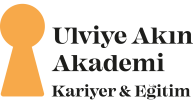Online Education Studies
Online education studies are implemented using various tools and strategies for all academy programs and assessment tests in our academy. Here are some basic steps and tips on how we effectively implement online education studies in our academy. These steps and strategies help our online education studies to be implemented extremely effectively and successfully. Since the educational content and methods are constantly reviewed and developed by Dr. Ulviye Akın and her expert team, the success rates in online education are very high. Domestic and international online studies are increasing day by day.
1. Goal and Target Determination
Educational Objectives: The goals and objectives of the online education program are clearly defined.
2. Platform Selection
Video Conferencing Tools: Live lessons and meetings are organized with tools such as Zoom, Microsoft Teams, Google Meet.
3. Content Development
- Course Materials: Lecture notes, presentations, videos, interactive content are presented.
- Modules and Units: Educational content is organized in spiral modules.
- Interactive Content: Active participation of students is ensured with evidence-based scientific, individual and individual learning profile-appropriate tools.
4. Lesson Planning and Scheduling
- Course Schedule: Weekly or daily schedules of lessons are determined.
- Live Lessons: Dates and times of live lessons are planned in advance.
5. Encouraging Student Participation
- Interactive Lessons: Interactive lessons such as question-answer sessions, group work and discussions are organized.
- Feedback: Feedback is given to students regularly.
- Encouraging Tools: Student participation should be encouraged with assignments, projects and assessments.
6. Assessment and Monitoring
- Assessments: Online assessments are used to measure students’ learning levels.
- Performance Tracking: Students’ progress is regularly monitored.
7. Continuous Improvement and Development
- Gathering Feedback: Regular feedback is received from students, parents and instructors.
- Content Update: Educational content and materials are updated regularly.
- Integration of New Technologies: New educational technologies and tools are integrated into programs.
